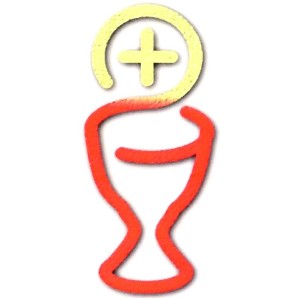A creed is essentially a statement of faith, of what we believe. The Latin word Credo means “I believe and trust”. There are many of these, but the most regularly used in Anglican services are the Apostles’ creed, the Nicene Creed and the Athanasian Creed. Why three? Do we believe different things at different times?
Both the Nicene and Apostles’ Creeds are ancient, dating back to the origin of the church. Whilst they are quite similar, the Apostles’ creed is used during Baptism, whereas the Nicene creed is mainly linked to Jesus’ death and resurrection, and used in weekly Sunday services. The Creed of St Athanasius, also similar, is said at morning prayer on major festival days such as Christmas Day, Epiphany, Easter Day, Ascension Day, Pentecost and Trinity Sunday.
The words of the Nicene Creed that we say in our churches each week are:
We believe in one God, the Father,
the Almighty, maker of heaven and earth,
Of all that is, seen and unseen.
We believe in one Lord, Jesus Christ,
The only Son of God, eternally begotten
of the Father, God from God,
Light from Light, true God from true God,
Begotten, not made, of one Being with the Father;
Through him all things were made.
For us and our salvation he
came down from heaven,
Was incarnate of the Holy Spirit
and the Virgin Mary and was made man.
For our sake he was crucified
under Pontius Pilate;
He suffered death and was buried.
On the third day he rose again in
accordance with the scriptures.
He ascended to heaven and is seated at
the right hand of the Father.
He will come again in glory to judge the
living and the dead,
And his kingdom will have no end.
We believe in the Holy Spirit, the Lord,
the giver of life, who proceeds from the
Father and the Son,
Who with the Father and the Son
is worshipped and glorified,
Who has spoken through the prophets.
We believe in one holy catholic and
apostolic Church.
We acknowledge one baptism for the
forgiveness of sins.
We look for the resurrection of the dead,
And the life of the world to come.
Amen.
A while back, Revs Debby and Neil wrote a series of articles for our parish magazine looking more deeply at this creed and explaining its meaning.
We say this creed each week, but in many churches it is sung, and there are many arrangements and settings, some fully orchestrated, some using folk tunes, some ancient, some contemporary. Not all mass settings include a Credo (especially if it’s a Missa Brevis, as it tends to be quite long), but here are a few examples:
- Five-part Mass (William Byrd) https://www.youtube.com/watch?v=RO5ClZu52Dc
- Mass in Blue (Will Todd) This is the most stirring and energetic Credo I have ever sung. Will Todd wrote his Mass in Blue in 2014 for jazz band, full SATB choir and soprano soloist. I learned the full mass with the Manchester Chorale in the autumn and winter of 2019 for performance in the spring of 2020. The learning process included a full day workshop with Will Todd, which was exhausting, but enormously good fun. You may have been in the audience when we sang this work in St Margaret’s Church in March 2020 – just days before the UK was put into lockdown in response to the global pandemic. The church was packed, and the rafters rocked! The final movement of any mass setting is of course the Agnus Dei (which I’ll cover in a few months’ time). Dissatisfied by the quiet and understated nature of the Agnus Dei as a way to finish the Mass in Blue, the composer chose to reprise the Credo right at the end so that performances of this incredibly uplifting mass setting always finishes on an exuberant high. https://www.youtube.com/watch?v=1XM0x_qSeOk
- Missa Brevis in D (Mozart) https://www.youtube.com/watch?v=m1lzie67otU Missa Brevis literally means “short mass”, and Mozart wrote this one especially for a client who liked his worship to be concise! It’s unusual to include a Credo in a Missa Brevis, but Mozart managed to get this one down to 5 minutes 28 seconds.
- Little Organ Mass (Haydn) https://www.youtube.com/watch?v=7gYqyyzX2Ag Haydn managed to condense the Credo to barely three minutes for this Missa Brevis!
- Taizé chants: I have to be honest, I was surprised to find a Taizé credo, however here it is: https://www.youtube.com/watch?v=znZNUgkplpk Very much in the style of a Gregorian chant, the priests sing most of the text (in French) and the congregation simply joins in with the repeated chants of “Amen”.
By the time next month’s magazine is published, we will have celebrated The Ascension, Pentecost and Trinity Sunday, and we’ll be back in “Ordinary Time”. To reflect this, I’ll be taking a look at the Sanctus and Benedictus.
Carol P

I would like to attend your church. Please give me opening times.
Thank you.
Lata Patel
LikeLike
Our regular services (Sundays 9.45am and Wednesdays 10.00am) are live-streamed on our Facebook page. More information is on the website, here https://stmargaretsprestwich.com/
LikeLike